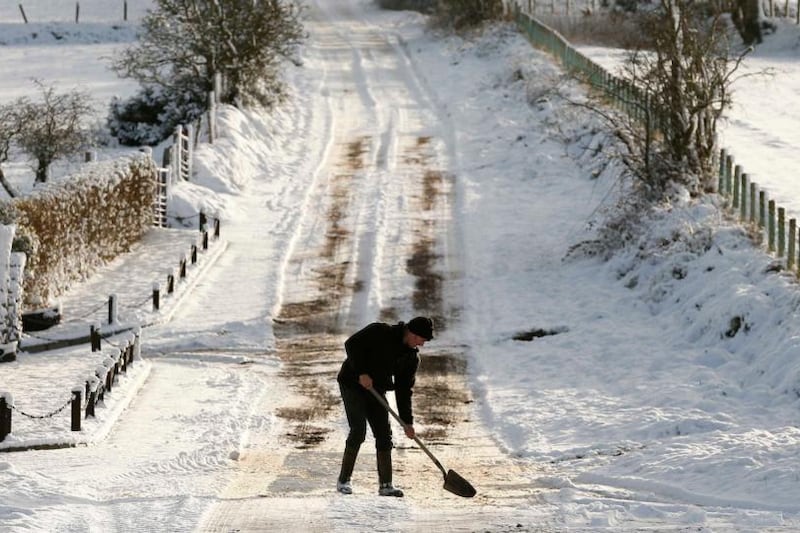EirGrid has selected the routes for three of the five new high-voltage underground cable circuits involved in its Powering Up Dublin programme. The programme will see the replacement of more than 50km of high-voltage cables that have been in use for almost half a century, and now need to be upgraded to meet the city’s future electricity needs.
The routes for the new circuits running from Finglas to North Wall, North Wall to Poolbeg, and Poolbeg to Carrickmines, were chosen following an extensive public consultation process involving local communities, businesses and other key stakeholders over the course of the past year.
“We are very pleased to have got to this point,” says EirGrid chief infrastructure officer Michael Mahon. “We are grateful for the engagement of everyone who participated in the consultation process up until now.”
The programme is necessitated both by the age of the existing circuits and by the capital city’s growing power needs, he explains. “Electricity coming into Dublin is underpinned by a backbone transmission network that’s 40 or 50 years old. By replacing the cables in the system, we can get 50 or 60 per cent more power into the city. Dublin’s population is growing and the city’s demand for power is increasing. Dublin needs more homes, and that means a requirement for more power. Increases in electric vehicle usage will also drive demand for more power, while the installation of heat pumps in new and existing homes will see increased demand for electricity.”
RM Block
The upgrade will also play a key role in efforts to decarbonise the electricity system by allowing more power to be brought onto the grid from planned renewable energy sources. “We have got to the nice point where as well as replacing the network to transport more power into Dublin, we will be able to use it to transport more renewable power in from the midlands and the west, as well as potentially from offshore wind farms in the Irish Sea,” says Mahon.

An important facet of the project is the collaborative approach by EirGrid. This has seen other utilities, local authorities and public service providers sharing expertise and information through the Dublin Infrastructure Forum which was established by EirGrid to facilitate the Powering Up Dublin programme.
Dublin Port is putting in a new road and they are putting in ducts for our cable during construction. We won’t have to dig it up again
— Michael Mahon, EirGrid
“Community and business engagement processes are a big part of all of our infrastructure projects,” says Mahon. “But Dublin is a special case. Many other organisations are looking to put infrastructure into the city. The last thing people want is to have EirGrid putting in a new cable this year and then have another company coming along to put something else in next year. Through the Dublin Infrastructure Forum, we have come together with local authorities and other organisations like Uisce Éireann, Gas Networks Ireland, ESB Networks and Dublin Bus to share ideas and information on our future plans.”
That knowledge-sharing exercise has already proved valuable. “We held quarterly meetings of the forum, and they were very useful to understand what was being planned by the other organisations,” he explains. “There were certain projects in train that we were able to take advantage of. For example, Dublin Port is putting in a new road and they are putting in ducts for our cable during construction. We won’t have to dig it up again.
“The Royal Canal Greenway project is putting ducts in for us as well. That means we won’t have to dig up the road adjacent to it. And Leopardstown Racecourse is facilitating the laying of 3km of cable across it. These are three really successful initiatives to come out of the forum, and disruption has been avoided in each case. We might be able to be helpful to the other organisations involved in the forum in the future.”
Disruption is also being minimised by the laying of a significant portion of the Poolbeg to Carrickmines cable route offshore.
Route selections for a further two cable circuits linking Poolbeg and Inchicore substations are expected to be announced in the coming months. Due to technical complexities, further detailed analysis and surveying of route options is required, and this process is currently in progress.
The next step will see EirGrid hold a series of public consultation events to inform people of the routes which have been selected. “After that, we will identify the planning challenges involved,” says Mahon. “There will be two aspects to the construction programme which will be carried out by ESB Networks. The ducting is installed first and then the cables. We hope that works can start by as soon as early 2025 and be completed in 2029. The ducting doesn’t have to be installed sequentially and some of it is already being installed along the Royal Canal. In a sense, construction has already started.”



















